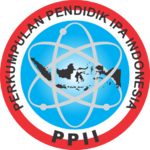The Effect Of The Old Level Of Boating On The Success Of Making Sweet Poultry And Kepok Banana
Abstract
This study aims to determine the effect of the length of boiling time on success in making purple sweet potato tapai and banana kepok. The method used in this research is the experimental method and documentation media. By using observations of purple sweet potato stew and banana kepok. The content that is in purple sweet potato is very much, including as a source of carbohydrates and sources of enough calories (such as vitamins, minerals, protein, fat, and fiber). While kapok bananas contain high carbohydrates and fiber. By means of fermentation, the anaerobic carbohydrate and amino acid breakdown process that is without the need for oxygen. The process of making tapai from purple sweet potato and banana is done by referring to the standard of making tapai in general, only in this study using 2 samples with each different level of maturity. From the results and discussion it can be concluded that the length of boiling time and the level of maturity in making purple sweet potato tapai and banana kepok affect the texture and taste.
Downloads
References
Hari Purnomo dan Adiono. 1987. Ilmu Pangan. Universitas Indonesia Press, Jakarta.
Nuryani, S. dan Soedjono. 1994. Budidaya Ubi Kayu. Dahara Priza, Jakarta. diakses pada 17 Desember 2019
Husna, el Nida, dkk. 2013. Kandungan Antosianin dan aktivitas antioksidan ubi jalar ungu segar dan produk olahannya.
El Husna, N., Novita, M., & Rohaya, S. (2013). Kandungan antosianin dan aktivitas antioksidan ubi jalar ungu segar dan produk olahannya. Agritech, 33(3), 296-302. diakses pada 17 Desember 2019
Julian, 2012. Fermentasi. Mata kuliah biologi https://matakuliahbiologi.blogspot.com/2012/06/fermentasi.html diakses pada 17 Desember 2019
Khanifah Dp. Bioteknologi pembuatan tapai pisang.https://www.academia.edu/18283266/Bioteknologi_Pembuatan_Tapai_Pisang diakses pada 17 Desember 2019
Lutfi Amalia Shaliha, dkk. 2017. Aktivitas Antioksidan, Tekstur dan Kecerahan Ubi Jalar Ungu (Ipomoea batatas) yang Dikukus pada Berbagai Lama Waktu Pemanasan. file:///C:/Users/Asus%20X%20Series/Downloads/260-1042-1-PB.pdf diakses pada 17 Desember 2019
Matos, M.E., Perez, Pacheco, E. 2009. Characterization of native and modified cassave starches ultrastructural study by scanning electron microscopy and x-ray diffraction techniques. Journal of Cereal Food World, 48, 78-81. diakses pada 17 Desember 2019
Oke, M.O., Workneh, T.S. 2013. A review on sweet potato postharvest processing and preservation technology. African Journal of Agricultural Research, 8(40), 4990-5003. diakses pada 17 Desember 2019
Muhamad Asnawi, dkk. 2012. Karakteristik Tape Ubi Kayu (Manihotutilissima) Melalui Proses Pematangan Dengan Penggunaan Pengontrol Suhu file:///C:/Users/Asus%20X%20Series/Downloads/118-205-1-PB.pdf. diakses pada 17 Desember 2019
Walid, A ( 2018 ). Assessment higher order Thinking skill. Yogyakarta: penerbit samudra biru
Witono, J.R., Kumalaputri, A.J., Lukmana, H.S. 2012. Optimasi Rasio Tepung Terigu, Tepung Pisang, dan Tepung Ubi Jalar, serta Konsentrasi zat Aditif pada Pembuatan Mie. Universitas Katolik Parahyangan.
Zubaidah, E. 1998. Teknologi Pangan Fermentasi. Fakultas Teknologi Pertanian Universitas Brawijaya. Malang
Authors who publish with ISEJ: Indonesian Science Education Journal agree to the following terms:
- Authors retain copyright and grant the ISEJ: Indonesian Science Education Journal right of first publication with the work simultaneously licensed under Creative Commons Attribution License (CC BY 4.0) that allows others to share the work with an acknowledgment of the work's authorship and initial publication in this journal.
- Authors can enter into separate, additional contractual arrangements for the non-exclusive distribution of the published version of the work (e.g., post it to an institutional repository or edit it in a book), with an acknowledgment of its initial publication in this journal.
- Authors are permitted and encouraged to post their work online (e.g., in institutional repositories or on their website) before and during the submission process, as it can lead to productive exchanges, as well as earlier and greater citation of published work.












